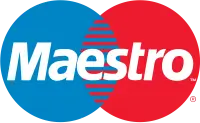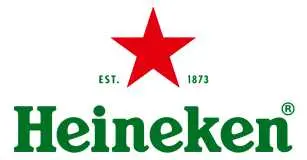
North America Optical Sensors Market Growth, Size, Trends, Revenue, Opportunities and Forecast 2033
North America Optical Sensors Market Size- By Technology, By Sensor Type, By Applications - Regional Outlook, Competitive Strategies and Segment Forecast to 2033
| Published: Feb-2024 | Report ID: SEMI2407 | Pages: 1 - 156 | Formats*: |
| Category : Semiconductor and Electronics | |||
- February 2021: Sensirion, a provider of sensors for the automotive and medical industries, stocked a wide range of environmental sensors at Mouser Electronics. Among the options was the SPS30 particulate matter sensor, an optical sensor that blends Sensirion's contamination-resistant technology with laser scattering. Accurate measurements are made possible by the sensor for Internet of Things (IoT) devices, air conditioners, and HVAC systems.
- November 2020: Sick and Trumpf collaborated to create the "first" industrial quantum sensor for use in manufacturing. Sick will handle product sales and application development, while Trumpf subsidiary Q.ANT will handle manufacturing of the measuring equipment.


| Report Metric | Details |
| Market size available for years | 2020-2033 |
| Base year considered | 2023 |
| Forecast period | 2024-2033 |
| Segments covered | By Component, By Streaming Type, By Deployment Type, By End User |
| Regions covered | United States, Canada, Mexico |
| Companies Covered | Atmel Corporation, Eaton Corporation, Hitachi Ltd, Honeywell Inc., Mouser Electronics Inc., Omnivision Inc., Robert Bosch GmbH, Rockwell Automation, Sick AG, ST Microelectronics Inc., Turck Inc., Others. |
- Manufacturers
- Suppliers
- Distributors
- Investors
- Research and Development Teams
- Regulatory Bodies
- Industry Analysts
| By Technology: |
|
| By Sensor Type: |
|
| By Applications: |
|
- North America Optical Sensors Market Size (FY’2024-FY’2033)
- Overview of North America Optical Sensors Market
- Segmentation of North America Optical Sensors Market By Technology (Hyperspectral Imaging, Near IR Spectroscopy, Photo-Acoustic Tomography, Optical Coherance, Tomography)
- Segmentation of North America Optical Sensors Market By Sensor Type (Fiber Optic Sensors, Image Sensors, Position Sensors, Ambient Light and Proximity Sensors, Cadmium Sulfide, Silicon, InGaAa Sensors, Extended InGaAs Sensors, Infrared Sensors, Others)
- Segmentation of North America Optical Sensors Market By Application (Commercial, Consumer Electronics, Medical, Automotive, Industrial, Aerospace & Defence, Optocouplers)
- Expansion Analysis of North America Optical Sensors Market
- Problems and Obstacles in North America Optical Sensors Market
- Competitive Landscape in the North America Optical Sensors Market
- Impact of COVID-19 and Demonetization on North America Optical Sensors Market
- Details on Current Investment in North America Optical Sensors Market
- Competitive Analysis of North America Optical Sensors Market
- Prominent Players in the North America Optical Sensors Market
- SWOT Analysis of North America Optical Sensors Market
1.1. Scope of the report1.2. Market segment analysis
2.1. Research data source2.1.1. Secondary Data2.1.2. Primary Data2.1.3. SPER’s internal database2.1.4. Premium insight from KOL’s2.2. Market size estimation2.2.1. Top-down and Bottom-up approach2.3. Data triangulation
4.1. Driver, Restraint, Opportunity and Challenges analysis4.1.1. Drivers4.1.2. Restraints4.1.3. Opportunities4.1.4. Challenges4.2. COVID-19 Impacts of the North America Optical Sensors Market
5.1. SWOT Analysis5.1.1. Strengths5.1.2. Weaknesses5.1.3. Opportunities5.1.4. Threats5.2. PESTEL Analysis5.2.1. Political Landscape5.2.2. Economic Landscape5.2.3. Social Landscape5.2.4. Technological Landscape5.2.5. Environmental Landscape5.2.6. Legal Landscape5.3. PORTER’s Five Forces5.3.1. Bargaining power of suppliers5.3.2. Bargaining power of buyers5.3.3. Threat of Substitute5.3.4. Threat of new entrant5.3.5. Competitive rivalry5.4. Heat Map Analysis
6.1. North America Optical Sensors Market Manufacturing Base Distribution, Sales Area, Product Type6.2. Mergers & Acquisitions, Partnerships, Product Launch, and Collaboration in North America Optical Sensors Market
7.1. North America Optical Sensors Market Value Share and Forecast, By Technology, 2024-20337.2. Hyperspectral Imaging7.3. Near IR Spectroscopy7.4. Photo-Acoustic Tomography7.5. Optical Coherance Tomography
8.1. North America Optical Sensors Market Value Share and Forecast, By Sensor Type, 2024-20338.2. Fiber Optic Sensors8.3. Image Sensors8.4. Position Sensors8.5. Ambient Light and Proximity Sensors8.5.1. Cadmium Sulfide8.5.2. Silicon8.5.3. InGaAa Sensors8.5.4. Extended InGaAs Sensors8.6. Infrared Sensors8.7. Others
9.1. North America Optical Sensors Market Value Share and Forecast, By Applications, 2024-20339.2. Commercial9.3. Consumer Electronics9.4. Medical9.5. Automotive9.6. Industrial9.7. Aerospace & Defence9.8. Optocouplers9.8.1. 4-pin Optocouplers9.8.2. 6-pin Optocouplers9.8.3. High speed Optocouplers9.8.4. IGBT gate driver Optocouplers9.8.5. Isolation Amplifier Optocouplers9.9. Others
10.1. North America Optical Sensors Market Size and Market Share
11.1. North America Optical Sensors Market Size and Market Share By Technology (2020-2026)11.2. North America Optical Sensors Market Size and Market Share By Technology (2027-2033)
12.1. North America Optical Sensors Market Size and Market Share By Sensor Type (2020-2026)12.2. North America Optical Sensors Market Size and Market Share By Sensor Type (2027-2033)
13.1. North America Optical Sensors Market Size and Market Share By Deployment Type (2020-2026)13.2. North America Optical Sensors Market Size and Market Share By Deployment Type (2027-2033)
14.1. North America Optical Sensors Market Size and Market Share By Applications (2020-2026)14.2. North America Optical Sensors Market Size and Market Share By Applications (2027-2033)
15.1. North America Optical Sensors Market Size and Market Share By Region (2020-2026)15.2. North America Optical Sensors Market Size and Market Share By Region (2027-2033)15.3. United States15.4. Canada15.5. Mexico
16.1. Atmel Corporation16.1.1. Company details16.1.2. Financial outlook16.1.3. Product summary16.1.4. Recent developments16.2. Eaton Corporation16.2.1. Company details16.2.2. Financial outlook16.2.3. Product summary16.2.4. Recent developments16.3. Hitachi Ltd16.3.1. Company details16.3.2. Financial outlook16.3.3. Product summary16.3.4. Recent developments16.4. Honeywell Inc.16.4.1. Company details16.4.2. Financial outlook16.4.3. Product summary16.4.4. Recent developments16.5. Mouser Electronics Inc.16.5.1. Company details16.5.2. Financial outlook16.5.3. Product summary16.5.4. Recent developments16.6. Omnivision Inc.16.6.1. Company details16.6.2. Financial outlook16.6.3. Product summary16.6.4. Recent developments16.7. Robert Bosch GmbH16.7.1. Company details16.7.2. Financial outlook16.7.3. Product summary16.7.4. Recent developments16.8. Rockwell Automation16.8.1. Company details16.8.2. Financial outlook16.8.3. Product summary16.8.4. Recent developments16.9. Sick AG16.9.1. Company details16.9.2. Financial outlook16.9.3. Product summary16.9.4. Recent developments16.10. ST Microelecronics inc16.10.1. Company details16.10.2. Financial outlook16.10.3. Product summary16.10.4. Recent developments16.11. Turck inc.16.11.1. Company details16.11.2. Financial outlook16.11.3. Product summary16.11.4. Recent developments16.12. Others
SPER Market Research’s methodology uses great emphasis on primary research to ensure that the market intelligence insights are up to date, reliable and accurate. Primary interviews are done with players involved in each phase of a supply chain to analyze the market forecasting. The secondary research method is used to help you fully understand how the future markets and the spending patterns look likes.
The report is based on in-depth qualitative and quantitative analysis of the Product Market. The quantitative analysis involves the application of various projection and sampling techniques. The qualitative analysis involves primary interviews, surveys, and vendor briefings. The data gathered as a result of these processes are validated through experts opinion. Our research methodology entails an ideal mixture of primary and secondary initiatives.



Frequently Asked Questions About This Report
PLACE AN ORDER
Year End Discount
Sample Report
Pre-Purchase Inquiry
NEED CUSTOMIZATION?
Request CustomizationCALL OR EMAIL US
100% Secure Payment






Related Reports
Our Global Clients
Our data-driven insights have influenced the strategy of 200+ reputed companies across the globe.






















